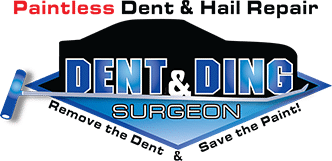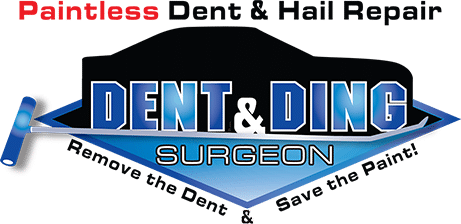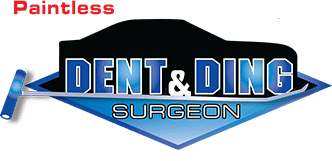Paintless Dent Repair (PDR): “Is it a Green alternative to conventional auto body repair?”
This issue of the Times is dedicated to understanding the environmental impact of conventional auto body repair compared to Paintless auto body repair.
It seems like there are many favorite buzz phrases today concerning our environment-“environmentally friendly”, “environmentally conscious”, “environmentally responsible”, “eco friendly”, “green alternative”,“planet friendly” and “carbon footprint”. There are others, but how does Paintless Dent Removal (PDR) rate when it comes to the environment? To understand the answer, one must know what it is and how it compares to its alternative.
PDR (Paintless Dent Repair) or more commonly referred to as “paintless dent removal is a highly skilled and innovative process that repairs auto dents, dings, hail damage, and crease dents without harming or disturbing a vehicle’s existing paint finish. Specially fabricated hand tools are used to safely access the damaged area from behind the panel and apply pressure to push while meticulously reforming the metal returning it back to its pre-damaged position. PDR is accomplished without the use of body fillers (body putty), sanding, primers or repainting the vehicle. Unlike conventional auto body repair, PDR does not conceal or hide auto body damage with body fillers and paint, but rather removes the damage permanently.
Closer examination of conventional auto body shop repair reveals the use of chemicals, prepping agents, solvents, activators, thinners, paint, and body putty not to mention the particulate pollution released when sanding. An array of non organic chemicals are utilized which present challenges for proper disposal. Many of the agents themselves pose a real risk to workers and several have been linked to cancer. With over 80,000 auto body shops across the United States alone, one can begin to size up the environmental impact. Can this be avoided? The answer is no! This is the reality of this repair process which goes with the territory if auto body restoration is warranted. Given the increase in world population and corresponding increase in number of automobiles on the road ways also comes an exponential risk in accidents and collisions. The demand for auto body restoration services will only continue to escalate. But, are there some cases where an alternative repair approach, which is environmentally friendly, could be employed? The answer is absolutely, yes.
The alternative to complete auto body and paint repair is PDR. Paintless dent repair is not a panacea for all auto body damage. True collision damage can only be repaired by means of complete auto body restoration by a professional auto body shop. On the other hand, roughly 95% of door dings, small to large dents, crease dents, and hail damage where the paint is not damaged,metal severally stretched, or location is not on the edge of a panel-may be successfully repaired using PDR.
It is highly effective for dent damage in the following cases:
- Hail damage.
- Small dings to larger dents.
- Paint finish in damaged area is not fractured, cracked, or broken.
- Damage is not located on the edge of a panel.
- Later model vehicles (1990 and later).
- Damaged area has not had previous body work or filler (body putty) applied under the dented area.
- Damage did not result fromahigher speed collision.
Discussion: Several recent advancements in PDR have significantly transformed the capability of the process. Due to the very high elasticity of today’s urethane paints, newer flexible sheet metals, hot glue pulling and other techniques-dents the size of a basketball are now being removed by means of PDR. In some cases, panels can be salvaged rather than replaced avoiding a trip to the landfill or junkyard. This can certainly be the case for hail damage repair.
Glue pulling is utilized when tool access is not possible and for assistance with larger dent repairs. The method is used occasionally but does put a small chink in the environmental PDR armor. In fair balance, a small amount of glue and alcohol as a releasing agent is consumed when this technique is employed. Some polish may also be used to remove scrapes, abrasions, scratches, or paint transfer from whatever hit the panel. This is where the environmental impact ends.
A quick example of how a hail damaged vehicle is repaired by both methods puts things into even more perspective. Conventional hail repair involves taking panels off and pounding the majority of dents out and then body putty is applied, sanded smooth in preparation for primer and paint. If the damage is more extensive, it may become more cost effective to replace panels and repaint. If the roof is repaired, it will need to be cut off and a new roof panel welded or glue in its place. In the end, not only will the hail damaged vehicle not have all its original factory paint but many of its original panels may be missing. This process many times takes weeks to complete.
When PDR is utilized, individual dents are meticulously worked out of each panel using hand tools underneath, restoring it to original pre-damaged condition while maintaining all the original paint and body parts. PDR is usually accomplished in 1-3 days on average, minimizing down time of the vehicle. Completed by a PDR professional, the vehicle retains its original value and is repaired using a comparatively environmentally sound process.However, severe hail damage can completely wreck a vehicle where total or near total restoration by conventional auto body repair is the only alternative.
Conclusion: Is PDR a“Green” alternative to conventional auto body shop repair? The answer is yes,where it can be employed. Knowing what can and cannot be repaired by PDR is the key. Approximately 95% of door dings, small to large dents, and hail damage where paint is in tact and the metal is not over stretched can be successfully repair ed using PDR. Even larger dents the size of a basketball can be removed if paint in the damaged area is undisturbed and the metal not over stretched. For hail damage, the preferred method of repair by the auto insurance industry is PDR. But there is a limit as to the severity of hail damage that can be fixed. Severe hail storms can produce devastating damage resulting in restoration only accomplished by a professional auto body shop. PDR offers an extremely attractive option for hail repair, one that certainly meets a “Green” alternative!
In summation, PDR (Paintless Dent Repair) is a unique service and alternative in many cases to conventional auto body repair. PDR offers consumers a comparatively cost effective option for non collision auto body damage with a host of other advantages and benefits. Consumer awareness of PDR is growing as more and more of these repairs are being performed across the globe leading to a healthier planet.
Dent & Ding Times is a periodic publication provided by Dent & Ding Surgeon, LLC.



